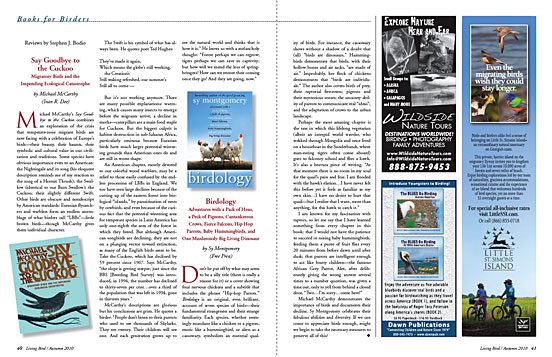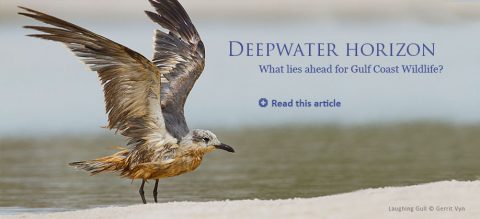Book Review: Say Goodbye to the Cuckoo, by Michael McCarthy
Reviewed by Stephen J. Bodio
October 15, 2010
Michael McCarthy’s Say Goodbye to the Cuckoo combines an exploration of the crisis that temperate-zone migrant birds are now facing with a celebration of Europe’s birds—their beauty, their haunts, their symbolic and cultural value in our civilization and traditions. Some species have obvious importance even to an American: the Nightingale and its song (his eloquent description reminds me of my reaction to the song of a Hermit Thrush); the Swallow (identical to our Barn Swallow); the Cuckoo; their slightly different Swift. Other birds are obscure and nondescript by American standards: Eurasian flycatchers and warblers form an endless assemblage of what birders call “LBBs”—little brown birds—though McCarthy gives them individual character.
The Swift is his symbol of what has always been. He quotes poet Ted Hughes:
They’ve made it again,
Which means the globe’s still working, the Creation’s
Still waking refreshed, our summer’s
Still all to come —
But it’s not working anymore. There are many possible explanations: warming, which causes many insects to emerge before the migrants arrive; a decline in moths—caterpillars are a main food staple for Cuckoos. But the biggest culprit is habitat destruction in sub-Saharan Africa, particularly ominous because Eurasian birds have much larger potential wintering grounds than American ones do and are still in worse shape.
An American chapter, mostly devoted to our colorful wood warblers, may be a relief to those easily confused by the endless procession of LBBs in England. We too have seen large declines because of the cutting up of the eastern forest into biological “islands,” by parasitization of nests by cowbirds, and even because of the curious fact that the potential wintering area for temperate species in Latin America has only one-eighth the area of the forest in which they breed. But although American songbirds are declining, they are not on a plunging vector toward extinction, as many of the English birds seem to be. Take the Cuckoo, which has declined by 59 percent since 1967. Says McCarthy, “the slope is getting steeper; just since the BBS [Breeding Bird Survey] was introduced, in 1994, the number has declined to thirty-seven per cent…over a third of the population that was left in 1994, gone in thirteen years.”
McCarthy’s descriptions are glorious but his conclusions are grim. He quotes a birder: “People don’t listen to their parents who used to see thousands of Skylarks. They see twenty. Their children will see one. And each generation grows up to see the natural world and thinks that is how it is.” He leaves us with a melancholy thought: “Forest perhaps we can regrow; tigers perhaps we can save in captivity; but how will we mend the loss of springbringers? How can we restore their coming once they go? And they are going, now.”

All About Birds
is a free resource
Available for everyone,
funded by donors like you
American Kestrel by Blair Dudeck / Macaulay Library



